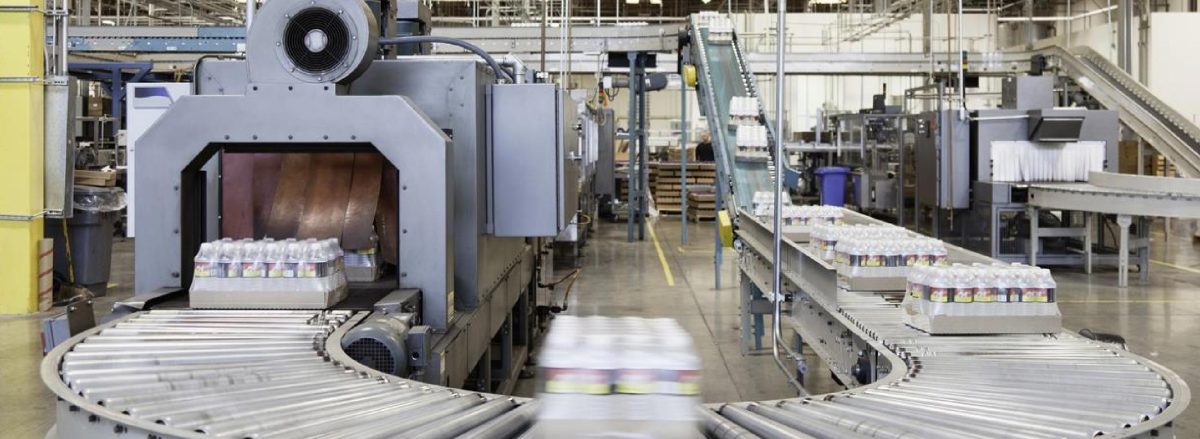Have you ever seen one of those television programs about how something is made? They can be pretty interesting, especially when it comes to food. We don’t like to think about it too much, but our food goes through many mechanical processes and machines before it lands on the shelves of a grocery store! Some of these machines and assembly line tools are pretty amazing, and it can be mesmerizing to watch programs that show how your favorite foods are prepared and packaged.
Now, imagine this. What would happen if those machines broke down? Or if they become contaminated? Let us share an example from Machinery Lubrication magazine. Arcino is a manufacturer of milk powder in Denmark. In 2002, a total of 1,100 lbs of their milk powder was inspected. It was contaminated with very fine iron particles. The inspection of the powder and the resulting contamination was discovered because a customer in Thailand noticed the milk had a pale grey tint and metallic taste. Their complaint was traced back to the plant that produced the powder and one worn axle in the gearbox of the production equipment. The lubricant used to treat the axle seeped through a ball joint, contaminated the product, and left behind the iron particles.
This incident with powdered milk isn’t the only one. Unfortunately, production issues like this happen all the time due to improper care and oversight. But it does highlight one essential thing –– the need for food-grade lubricants designed for food production processes. They must meet the same functions as any other lubricant with one big caveat. They have to be safe for food production. That means that in addition to protecting against friction, oxidation, heat distribution, and wear, food lubricants must also:
- Resist degradation from food products
- Resist degradation from chemicals, water, and steam
- Exhibit neutral behavior towards plastics
- Dissolve sugars
- Comply with food, health, and safety regulations
- Be physiologically inert, tasteless, and odorless
- Be internationally approved
That’s a pretty tall list! Food-grade lubricants are also used in much more extreme environments and situations. For example, they can be subjected to intense heat in the cooking process. Think about how messy your kitchen gets when you bake. Imagine if you were cooking in mass quantities. That’s why food production lines and machinery are so complex and precise, but only if the machinery is in good working order with suitable lubricants!
Just like lubricants for engines and heavy machinery, food lubricants are designed to ensure the equipment runs smoothly and provide wear protection. Without lubricants, these complicated pieces of machinery would not run safely or as well as they do. But because these lubricants are in close contact with food and food sources, they must meet rigorous safety standards. Therefore, the USDA has created three designations for food-grade lubricants. Each lubricant is categorized and approved for different processes. Let’s take a closer look at the three categories –– H1, H2, and H3.
- H1: Food-grade lubricants are used in food processing environments where infinitesimal food contact is possible, so they must be safe for consumption.
- H2: Food-grade lubricants are used on equipment and machine parts provided there is no possibility of contact.
- H3: Food-grade lubricants are used to prevent rust on hooks, trolleys, and other equipment that comes into close contact with food. These lubricants are usually edible oils.
The difference in categorizing a food-grade lubricant between H1 and H2 is based on the level of contact the lubricant has with food or food processing equipment. Therefore, it always errs on the side of caution toward H2. Once a food-grade lubricant is categorized, it is then subject to approval by the USDA. Each ingredient in the lubricant is subject to approval and is checked against allowable substances issued by the FDA. Further international approvals are also needed.
Now that you know what food-grade lubricants are and how they are categorized, it’s essential to recognize what substances they’re derived from. There is a wide variety of substances used for food-grade lubricants, but there are two main types of base stock: petroleum-based lubricants and synthetic lubricants.
As a fuel and lubricant supplier, we know that many of our customers require food-grade lubricants for various industrial purposes. That’s why we are proud to offer high-quality food-grade lubricants from FUCHS LUBRITECH’s CASSIDA branded line. These mineral oil-based synthetic lubricants provide high performance for a wide variety of food and beverage processing uses. In addition, the CASSIDA line of food-grade lubricants is top quality and certified across the board for safety and performance.
The next time you watch a program that shows the process of bottling beer, making cheese slices, or some other sort of food processing, remember all those automatic machines have lubricant needs, just like any other piece of machinery. You can’t use just any old lubricant when you are working with food processing equipment. Otherwise, you may end up contaminating the food. Sometimes the contamination can even cause sickness. We’ll share one more example from Machinery Lubrication. In 2000, 86,000 pounds of deli meat was recalled after being exposed to a non-food-grade lubricant. Unfortunately, several consumers reported intestinal discomfort and that the food tasted and smelled funny.
We want to make sure that your business runs safely and that if you require food-grade lubricants, you can trust that the products you are using are safe and will perform well. That’s why we offer CASSIDA products to our customers. So, if you require food-grade lubricants, let us know your needs, and we’ll find the right product for you!
